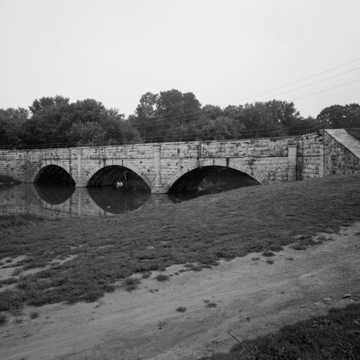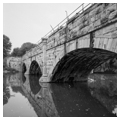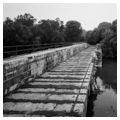The Conococheague Creek Aqueduct was one of the eleven masonry aqueducts needed to carry the Chesapeake and Ohio Canal over tributaries of the Potomac River. Resident engineer Purcell designed the aqueduct to span Conococheague Creek, and it was built by Michael Byrne and Company using limestone taken from the nearby High Rock Quarry. Because it was built near the prominent canal port of Williamsport, this aqueduct was the most ornate. The 210-foot span is achieved with three arches sheathed with ashlar masonry, and the downstream face of the aqueduct has classical pilasters with capitals at each pier. However, in 1920 the upstream section collapsed due to flooding and was rebuilt in timber. In 2019, a restoration effort, including a new wood upstream face, allowed the aqueduct to be rewatered, making it the first functioning aqueduct on the canal since 1924.
References
Maddex, Lee R. “Chesapeake & Ohio Canal, Conococheague Creek Aqueduct,” HAER No. MD-123, Historic American Engineering Record, 1996. Prints and Photographs Division, Library of Congress, Washington, D.C.




















